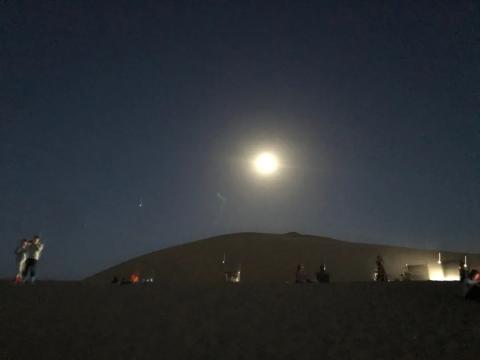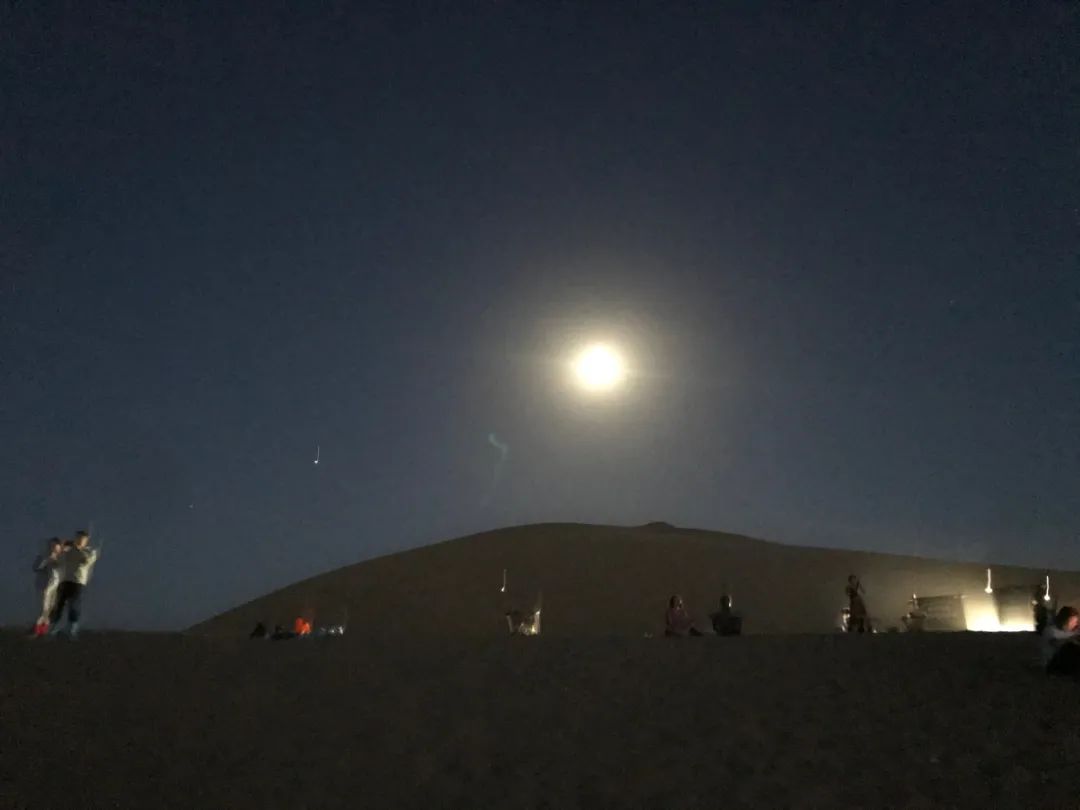
"Listen to the sound of wind and sand"There is a mysterious oasis in the desert of Dunhuang.Tens of thousands of years of quicksand failed to submerge her.However, in the last century, due to human intervention, it almost disappeared from the earth. This is the miracle of life that many people must visit in this lifetime - Crescent Moon Spring.


The sand grains in Mingsha Mountain cannot speak, so they can only tell the legend of the Silk Road through the sound of wind.Crescent Moon Spring is like a strong coordinate, proving that the camel team thousands of years ago also knelt on this land at my feet.
The oasis eventually survived, but the lake lost its former vastness.The quiet glass-like pond seemed The crescent moon fell into the center of the desert. In this desolate and desolate place, it was as quiet as a virgin, singing in the wind.The eternal sand will not fill the spring, and the spring will never dry up.This is exactly the Crescent Moon Spring described by Yu Qiuyu, the mirror of the sky and the eye of the desert. Surrounded by pavilions, pavilions and corridors, it is lonely, beautiful, but not desolate.The craftsmen chiseled away the dust and sand with their axes and chisels during the sunrise and sunset, revealing this Dunhuang.Everyone who comes here, please don’t forget that the deep and shallow water marks are not a medal to be proud of.That is God turning over the hourglass and reminding us with a countdown.In the game with nature, no cheating is allowed.
The Mogao Grottoes are so grand that they put the myth of human nature into shape.Dunhuang is the pearl of the Silk Road. It flourished during the Han and Tang Dynasties and declined during the Ming and Qing Dynasties. It was not until the last century that the grottoes that had been sealed for many years were revealed to the light of day.If you have visited the Louvre in France and praised the wonderful murals, then you will be deeply impressed by the artistic attainments of the ancients when you come to the Mogao Grottoes.


If Dunhuang is a representative of Chinese classical art, I don’t think it is enough to explain the magnificence here. It is more like the four major civilizations meeting in China. Le Zun traveled west to Mingsha Mountain and saw the Buddha's light flashing, so he excavated and repaired the Buddhist temple. Later generations followed suit."The long river flows in front of you, and the waves reflect the heavy pavilion"The vivid murals tell stories and scriptures; the mottled walls tell stories and history; the Mogao Grottoes tell stories, stories of the East.
Every Buddha statue has traces of history. The seated statue of Sakyamuni in the nine-story building was built during the Wu Zetian period. The construction of such a large Buddha statue in the northwest undoubtedly shows the strength of the country at that time.Whether it is experiencing the vivid scenes of nomadic hunting during the feudal regimes established by the northwest minority aristocrats such as the Northern Wei, Eastern Wei, Western Wei, Northern Qi, and Northern Zhou; or it reflects the "Han" unification established by the noble Yang Jian of the Northern Zhou Dynasty and the people and horses in the Gobi and grasslands during the Sui Dynasty. "Interactive" life scenes; whether it is stone clay sculptures or flying murals, they are all representative works of a time and place, and they are also artistic reflections of the historical and social life of a time and place. It is truly a masterpiece of nature and human history! For tens of millions of years, as early as ancient times, the "Three Miao" tribes who migrated westward from the Central Plains have flourished in Dunhuang. During the Han and Tang Dynasties, Dunhuang was the chokepoint of the ancient "Silk Road", the center of the intersection of Eastern and Western cultures at that time, and a hub for the spread of Buddhism eastward. How hard our ancestors worked here to create such a cultural treasure - the "Mogao Grottoes".
Rereading the Mogao Grottoes in Mr. Yu Qiuyu's "Cultural Journey", "When looking at the Mogao Grottoes, you are not looking at specimens that have been dead for a thousand years, but at lives that have lived for a thousand years." Suddenly I felt that all my descriptions, All compliments become superficial. The Mogao Grottoes in Mingsha Mountain is a collection of history that contains too much, a history of development and a history of sadness.The sea clouds are gathered around, and the Taiqing Tower and the sky are full of autumn colors. The bright moon comes and the clouds and mists disappear, and the mountains and rivers of the city are visible. The night is long, the west wind is blowing, and the Yinhan ice wheel is on the side. Yun Ni San Lane, Guanghan Palace Flute. Partially illuminating the Zifu Yaotai, the incense cage and the jade seat, the green mist fascinates the north and south. Where heaven and earth gaze, there should be guests returning by the wind. Dewdrops are falling on the golden plate, the cold is growing on the jade sky, and the ground is white with new frost. The clear view is in the pot, and the painted eaves are hung high with empty green.——"Nian Nujiao·Haiyun Si Leng" Zhang XiaoxiangThere is a high probability that we will have to stop updating for a whole day tomorrow because we have to travel and visit Zhangye Danxia Geopark.
Thank you all for supporting me despite your busy schedule. This kind of walking and writing is a test of physical strength.
Just don’t give me a like ?
Click to read the original text, which is the full text of Mogao Grottoes in Yu Qiuyu's "Cultural Journey". Reading before entering the scenic spot is one kind of feeling, and reading after coming out is another feeling. This may be the meaning of studying. I am better than children at this point.























